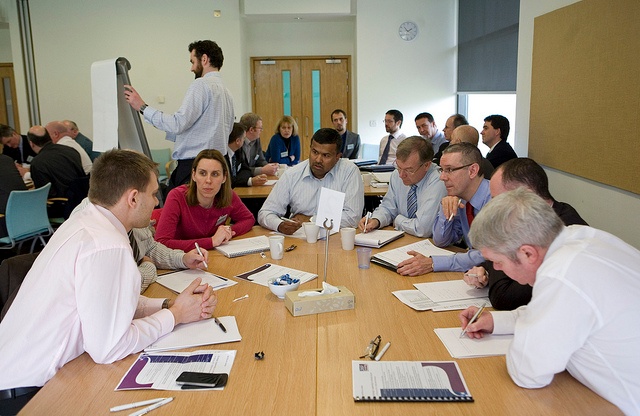We are in the process of wrapping up an energy efficiency and building automation system upgrade project at an office building. The project involved converting an older boiler/tower heat pump loop system with constant speed pumping to variable flow, and the installation of a modern building automation system (BAS) with new energy efficient control sequences. The project has been a big success however, the project team experienced some challenges in really “dialing in” the controls. The main obstacle is that remote access to the BAS had not yet been established. Having remote access to building controls during the later stages of construction provides many benefits—including being able to monitor system performance remotely, review alarm logs and historical trends to identify problems, and even make adjustments on-the-fly to tune system parameters correctly. Without remote access we would have had to drive to the building, request access to a network closet from the property manager, plug into the server in a closet, and then spend time in a tight space trying to accomplish our goals before unplugging and heading back to the office. Needless to say it is not convenient to do frequently, and is expensive.

Conversely, the “low-friction” nature of remote access, when configured early during a project, allows the CxA, owner, or project engineer to, for example, pull up a control system for a particular building on a second monitor at the office, download necessary data, and glance at the system throughout the day while doing other work—watching the system operate in real-time and gaining an understanding of problems, making adjustments if required, and really dialing things in. Of course this cannot supplant actual time in the field completely, but can augment it and make best use of time both at the office and onsite.
Establish BAS Access Early
In my experience as a commissioning authority, I have found that in both new construction and in projects upgrading an existing building, the final details (and often even a bulk of the work) of the building automation system (BAS) installation/programming is left to the very end of a project. One of the BAS details often left to the very end—and one which frequently is not even directly in the controls contractor’s scope of work—is to land a network connection at the BAS server/hardware and properly configure internet “remote” access to the system.
 Image by Flickr user CWCS Managed Hosting
Image by Flickr user CWCS Managed Hosting
While it may not seem urgent to establish BAS remote access either during or directly following construction, having remote access as early as possible in the project work can help multiple parties involved in the project work more effectively, and can result in significantly reduced operational startup hiccups. As technical capabilities such as online collaboration websites and widespread jobsite connectivity become more ubiquitous, it’s reasonable to expect that the team can deliver early access to a building automation system to the project team—even if this is first established only via an LTE modem or other temporary infrastructure until, for example, the owner’s IT team configures a permanent installation.
Benefits to Traditional Cx/Construction Activities
Implementing remote access early can aid many parties in the process. The controls contractor can benefit by being able to solve early stage problems without having to leave the office, or from another jobsite—thereby saving money and time. The owner can have an increased peace of mind by being able to remote-in to the BAS while away from the building during non-business hours and check on things.

The CxA can benefit from being able to watch equipment come online as it is installed/connected and point-to-point is completed. This can be a useful method to assess readiness for later stage equipment checkout as well as readiness for the traditional functional testing process. Paired with the online construction management sites like Procore, this has the potential to greatly aid construction schedules and minimize delay
Prior to functional performance testing, trending can be reviewed not only to assess readiness, but to identify issues before in-field testing even begins, allowing time onsite to be spent most effectively by the CxA and the controls contractor. It also helps to make everyone on the team look even more like the professionals they are since many of the more obvious issues have been resolved ahead of time, before testing formally began. Following testing, it can be used to follow up on questions raised during testing, for some issues trend/graphics review may allow remote verification and issues close out.
Taking BAS to the Next Level During Construction
Beyond utilizing BAS throughout the construction process, pairing building analytics packages (i.e. FDD) can offer even greater opportunities both during and after construction. This approach is well defined in a recent ASHRAE Journal article from the February 2016 issue, Data Analytics From Cradle to Grave[1]. By creating “scripts” intended to verify equipment operation, some automation can be applied to equipment sequence verification. For example, a functional test can essentially be created using the FDD platform for one type of equipment and then run across many instances—a good example is VAV boxes. While physical testing of equipment is still essential, applying an FDD script across a 100% sample of equipment would create a first wave of low cost testing to catch low level issues. Combine this with, for example, a traditional 20% sample of equipment testing may create the best balance of automation and physical presence.
One major advantage of the CxA utilizing automated FDD tests is that if equipment fails testing, retesting through re-application of already created scrips can be done more cost effectively. Further, building operators, when appropriately trained, can utilize these tests to either provide continuous monitoring, or during predetermined intervals to re-verify equipment function and to identify system drift.
Conclusion
By establishing remote access to a building automation system early in the project timeline, many parties can leverage this system to aid in oversight, problem solving, and commissioning of the systems during various project phases—resulting in increased system reliability, easier troubleshooting, and cost/headache savings for all. With a skilled controls contractor and commissioning authority, further benefits of BAS can be leveraged through the use of building analytics (FDD) to automate portions of the functional testing process—allowing automation of some of the more rote testing while the CxA can focus on the trouble areas.[1] Data Analytics From Cradle to Grave; Rohloff, Adam; Meacham, Jim; AHRAE Journal February 2016;


